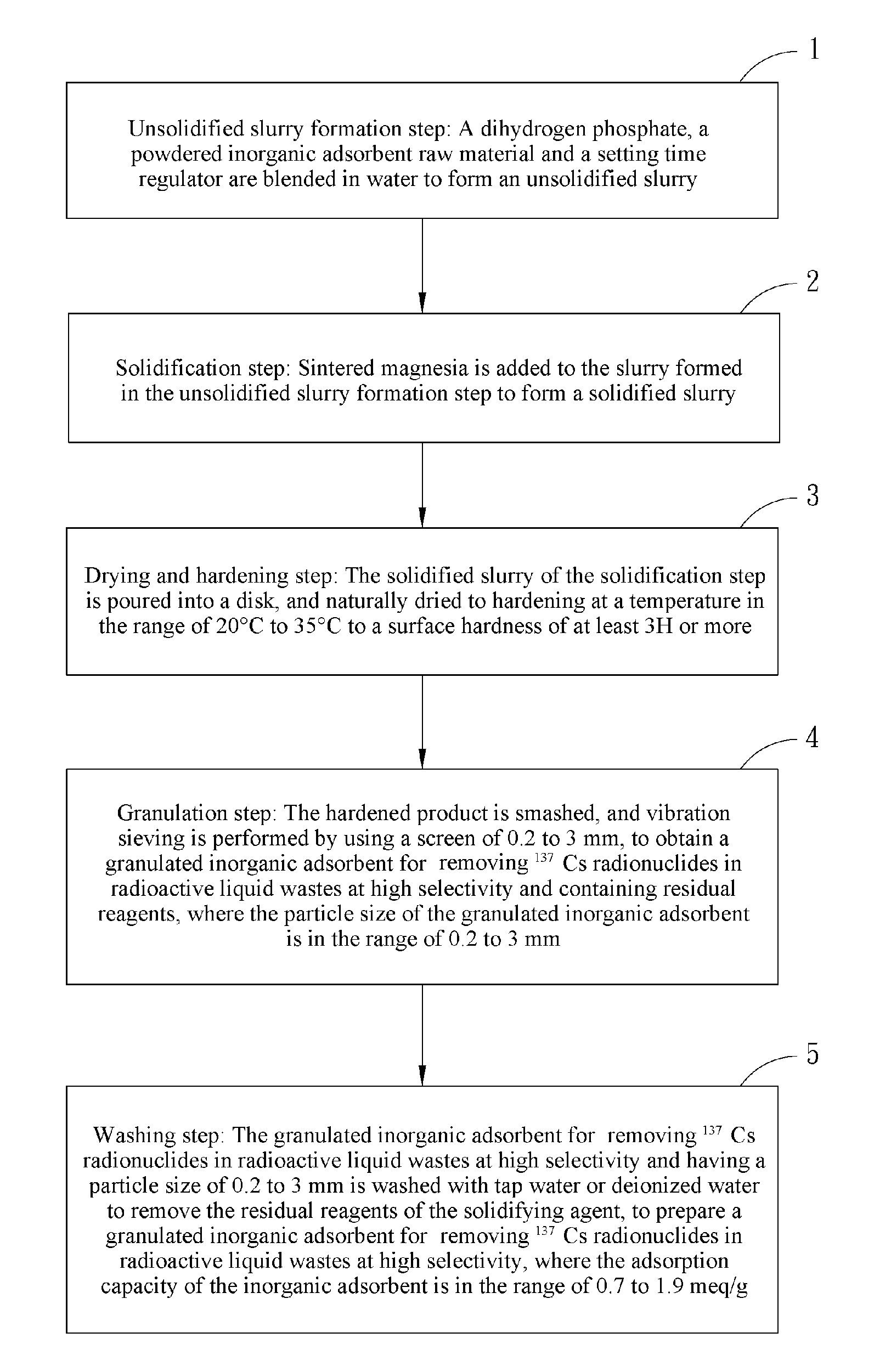Method for preparing granulated inorganic adsorbent for radionuclides
a radionuclide and adsorption technology, applied in the direction of physical/chemical process catalysts, silicates, other chemical processes, etc., to achieve the effect of high adsorption capacity and high selectivity
- Summary
- Abstract
- Description
- Claims
- Application Information
AI Technical Summary
Benefits of technology
Problems solved by technology
Method used
Image
Examples
Embodiment Construction
[0020]Referring to FIG. 1, the present invention provides a method for manufacturing a granulated inorganic adsorbent for removing 137Cs radionuclides in radioactive liquid wastes at high selectivity, which includes the following steps:
[0021](1) Unfixed slurry formation step: A dihydrogen phosphate, a powdered inorganic adsorbent raw material and a setting time regulator are blended in water to form an unfixed slurry.
[0022](2) Fixing step: Sintered magnesia is added to the slurry formed in the unfixed slurry formation step to form a fixed slurry.
[0023](3) Drying and hardening step: The fixed slurry of the fixing step is poured into a disk, and naturally dried to hardening at a temperature in the range of 20° C. to 35° C. to a surface hardness of at least 3H or more.
[0024](4) Granulation step: The hardened product is smashed, and vibration sieving is performed by using a screen of 0.2 to 3 mm, to obtain a granulated inorganic adsorbent for removing 137Cs radionuclides in radioactive ...
PUM
| Property | Measurement | Unit |
|---|---|---|
| temperature | aaaaa | aaaaa |
| temperature | aaaaa | aaaaa |
| particle diameter | aaaaa | aaaaa |
Abstract
Description
Claims
Application Information
 Login to View More
Login to View More - R&D
- Intellectual Property
- Life Sciences
- Materials
- Tech Scout
- Unparalleled Data Quality
- Higher Quality Content
- 60% Fewer Hallucinations
Browse by: Latest US Patents, China's latest patents, Technical Efficacy Thesaurus, Application Domain, Technology Topic, Popular Technical Reports.
© 2025 PatSnap. All rights reserved.Legal|Privacy policy|Modern Slavery Act Transparency Statement|Sitemap|About US| Contact US: help@patsnap.com



